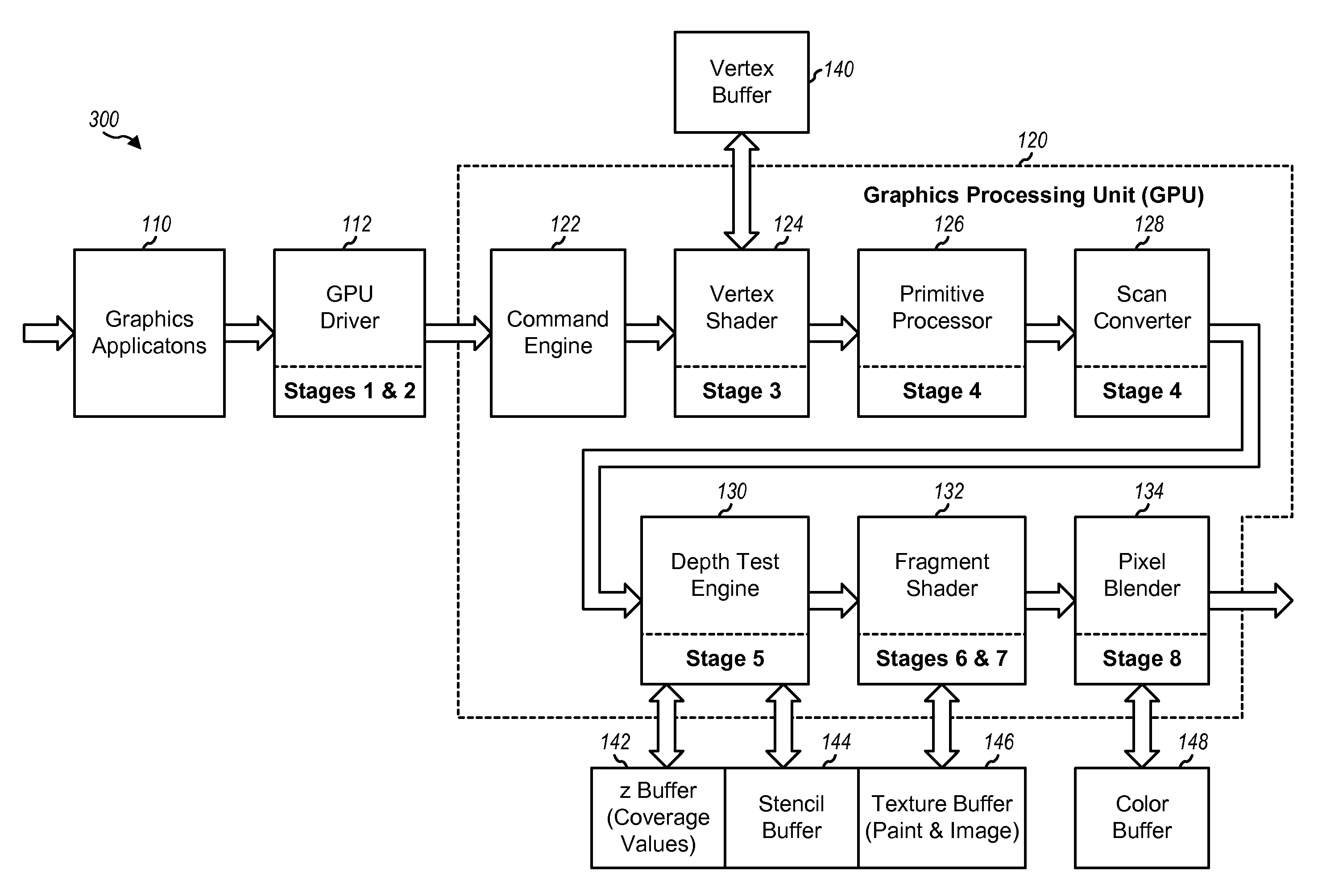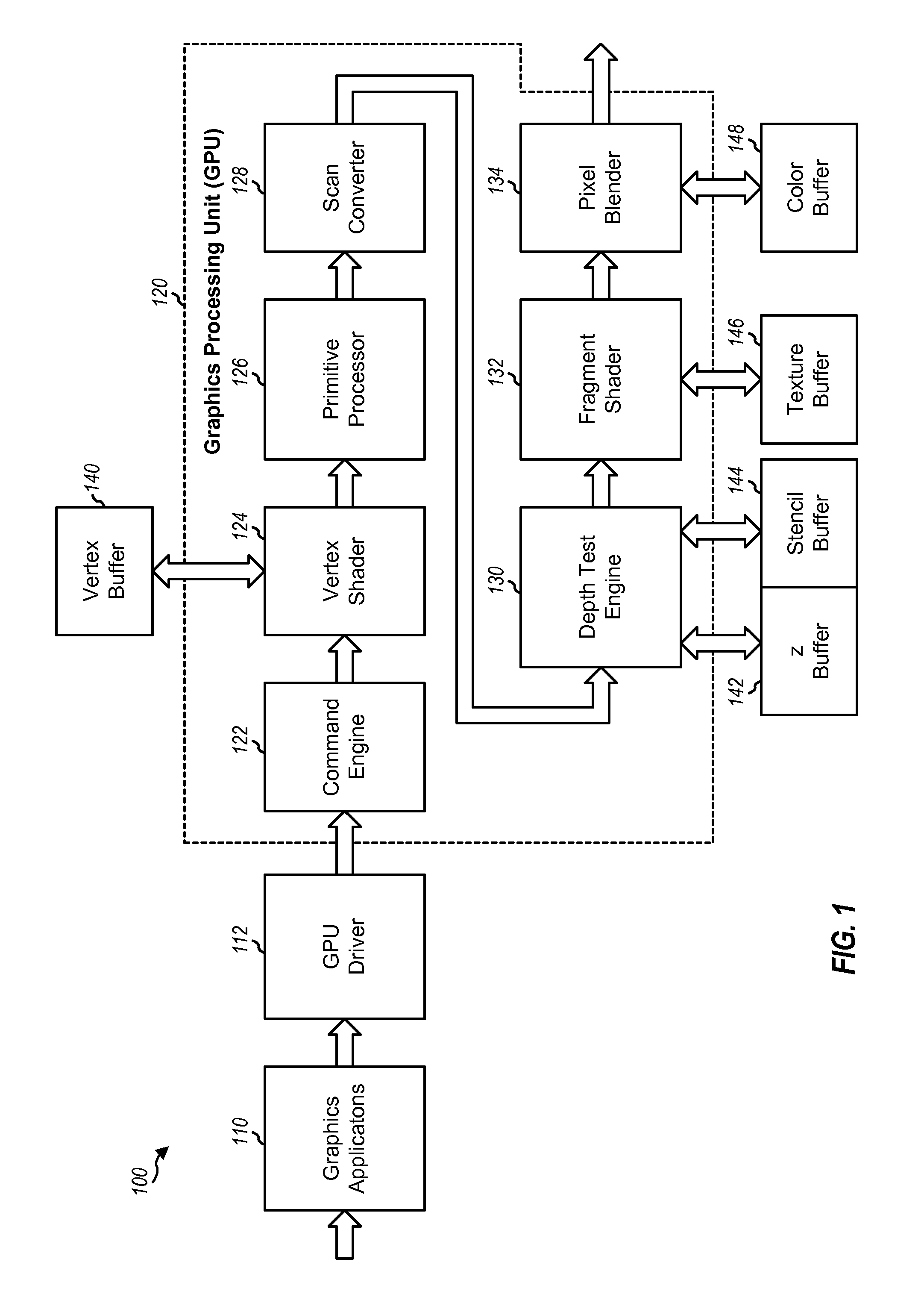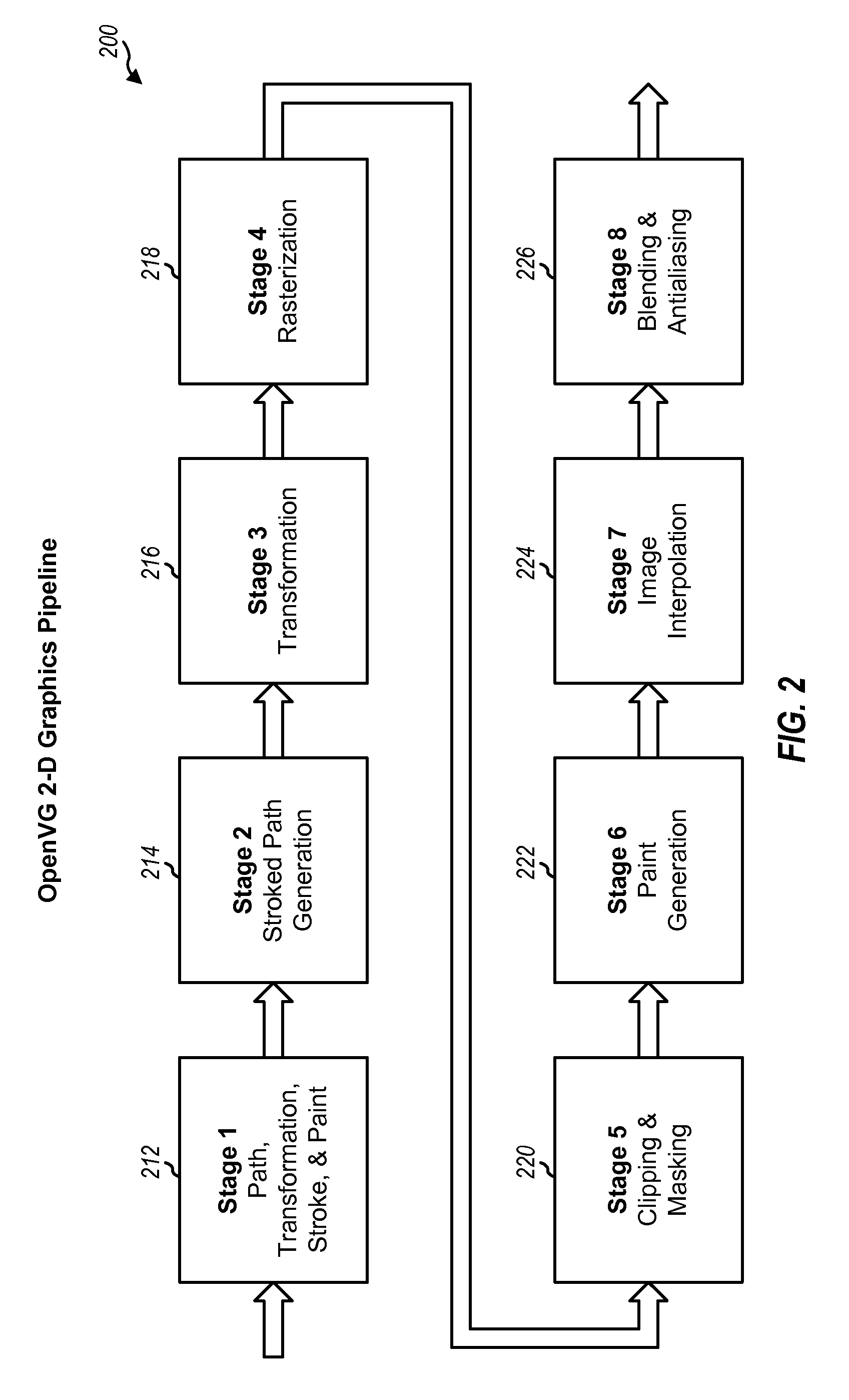Efficient 2-d and 3-d graphics processing
a graphics processing and 3-d technology, applied in the field of electronics, can solve the problems of computational intensive processing for these 2-d graphics stages and computational intensive processing for these 3-d graphics stages, and achieve the effect of efficient us
- Summary
- Abstract
- Description
- Claims
- Application Information
AI Technical Summary
Benefits of technology
Problems solved by technology
Method used
Image
Examples
Embodiment Construction
[0021]A GPU may support 2-D and / or 3-D graphics. 2-D graphics stores 2-D representation of geometric data that is processed to generate 2-D images or drawings. 3-D graphics stores 3-D representation of geometric data that is processed to generate 2-D images. 2-D graphics may be compared to painting whereas 3-D graphics may be compared to sculpting. 2-D and 3-D graphics may utilize different pipelines with different stages and graphics operations to generate final images for display.
[0022]A 2-D or 3-D image may be represented with primitives, which are basic units of geometry. For 3-D graphics, primitives may include polygons (typically triangles), lines, points, etc. Each triangle is defined by three vertices, and each line is defined by two vertices. Each vertex may be associated with various attributes such as space coordinates, color values, texture coordinates, etc. Each attribute may have up to four components. For example, space coordinates may be given by either three compone...
PUM
 Login to View More
Login to View More Abstract
Description
Claims
Application Information
 Login to View More
Login to View More - R&D
- Intellectual Property
- Life Sciences
- Materials
- Tech Scout
- Unparalleled Data Quality
- Higher Quality Content
- 60% Fewer Hallucinations
Browse by: Latest US Patents, China's latest patents, Technical Efficacy Thesaurus, Application Domain, Technology Topic, Popular Technical Reports.
© 2025 PatSnap. All rights reserved.Legal|Privacy policy|Modern Slavery Act Transparency Statement|Sitemap|About US| Contact US: help@patsnap.com



